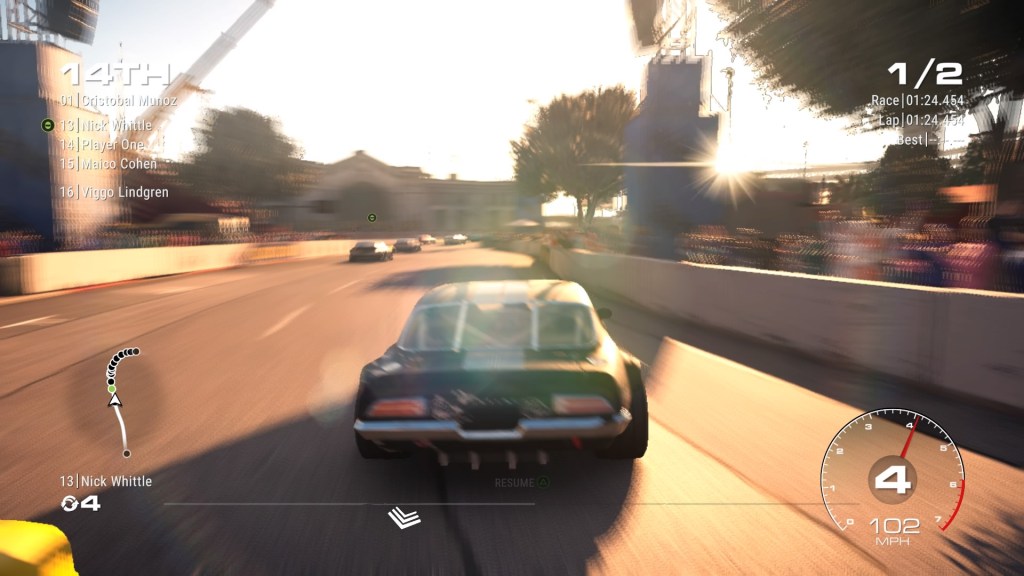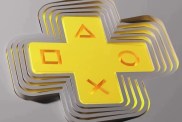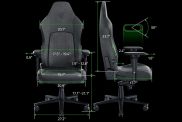The GRID series has been a mainstay in gaming for the last decade. What many people don’t realize is that these titles are actually part of a larger, overarching franchise of racing games that fall under Codemasters’ TOCA umbrella. In reality, this is a brand that has existed for over twenty years. Talk about a stealthy legacy! Longevity aside, there hasn’t been a GRID entry since 2014. At least that was the case until this week, when a full-scale reboot grabs the checkered flag for first time on PS4. Will this prove to be a welcome return to the track, or will it end up taking a premature trip into the pits?
Driving Their Success
It feels like every racing game nowadays is looking for that unique hook that will somehow wow the ever-cynical gaming masses. For GRID, the selling point is the series’ new “AI Choreographer,” which is constantly working to shift the flow of an entire race. Drawing from a pool of 400 AI drivers, the game tweaks the experience on the fly, in hopes of driving the in-race drama to new heights.
The actions of the player over the course of a race seamlessly feed into these AI behaviors in the form of the “Nemesis” system. Though I’m sure they will deny this until the end of time, this system is very reminiscent of the Forza’s embarrassingly named “Drivatars.” In both cases, over the course of a limited series of competitions, certain digital competitors will take exception to your driving and chose to set their sights on making your life a living hell.
In damn near every case where a fellow racer decided to become my nemesis, I’m fully willing to admit that it was my own fault. Partially because my driving style is more akin to participating in a demolition derby than any sort of precision-oriented competition, it’s safe to say that I made my fair share of enemies in very short order. Most cases, I would be lucky to make it through the first lap without pissing off at least one fellow driver.
Once the proverbial switch was flipped, these folks transformed from mild-mannered professional athletes into hate monsters that made the Incredible Hulk look like a Troll doll. Whatever it took to ruin my chances of success, whether they be continuously clipping my tail bumper or straight up forcing me into the wall on a turn, these digital douche nozzles suddenly decided to make me understand the gravity of my personal mistake. The genius part of this system is that it injects conflict and competition into a race, regardless of whether you’re in first place or the middle of the pack. Who cares if you don’t have any chance to win when you can still compete to put that piss-ant pit bull of a competitor in their place?
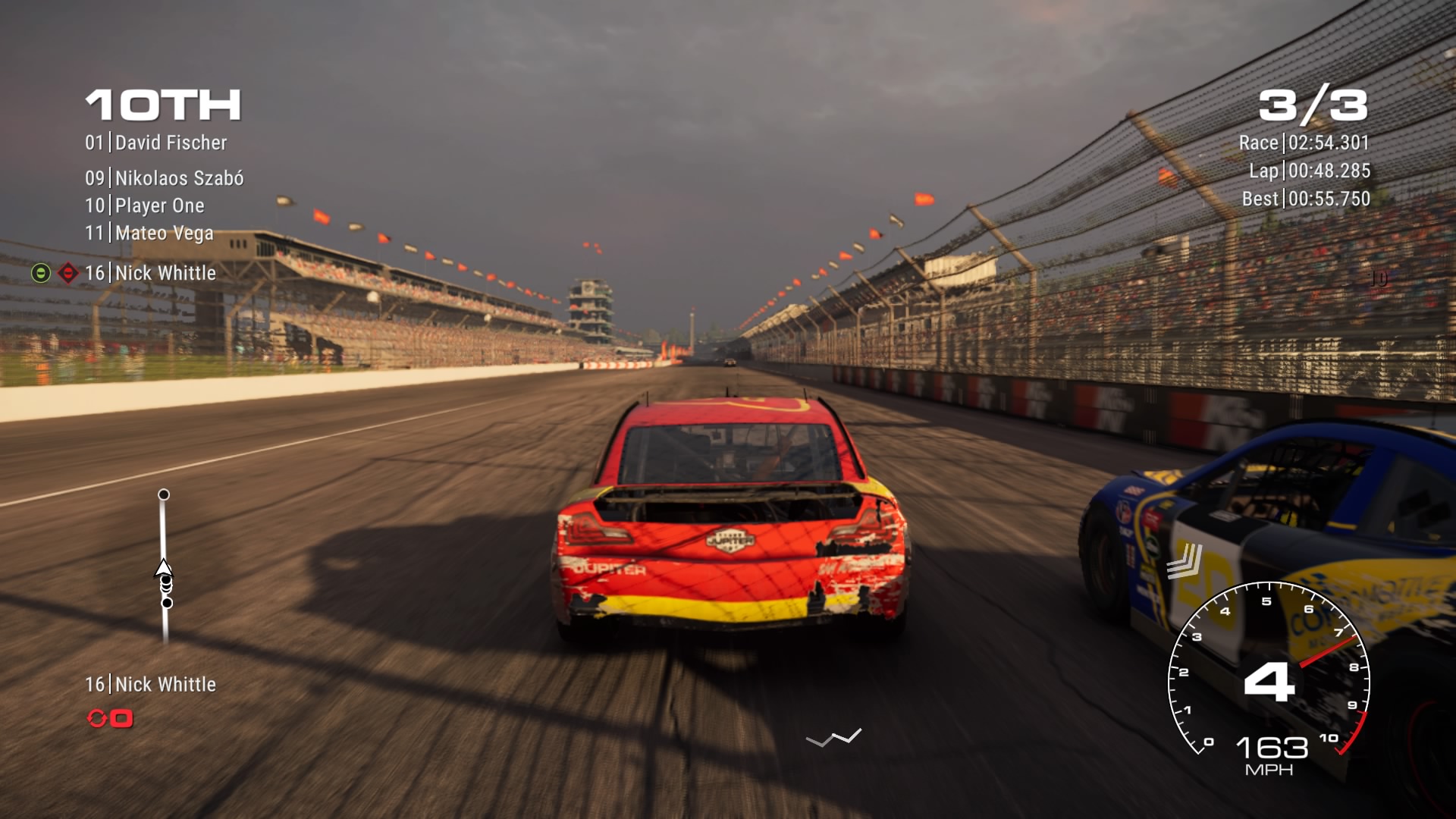
Racing to the Rescue
And this is just the tip of the iceberg when it comes to the enhanced AI behaviors. Players also have the chance to recruit team members that will look out for their best interests. This is especially helpful when you’re actually trying to fend off the attack of a nemesis. In some cases, teammates will actually run interference while you move ahead in the field. Granted, this rarely tends to hold up for long, but when you make as many enemies as I do on the track, any respite is appreciated.
While most times AIs are programmed around being as competitive as possible, in the case of the previously mentioned AI Choreographer, the focus is around generating as many interesting experiences as possible. Previously unheard-of instances like several competitors inadvertently colliding out of the blue, resulting in a massive pileup in the process, become more common thanks to the constantly evolving behaviors of every participant. Simply put, much like in real-life, drivers will make mistakes, which can both work to the player’s benefit or detriment. These sorts of organically-occurring incidents are what help keep the action fresh, regardless of skill level.
Another factor that works in Grid’s favor are the extensive varieties of events available throughout the single-player campaign. Employing the Stock, Tuner, Touring, Invitational and GT flavors of motorsport madness, there’s never any shortage of ways to hit the track. Granted, the game only features a grand total of eight different circuits and four cities at launch, but there are over eighty different permutations on the routes being used. In many cases, these changes are so extreme that they might as well be their own track entirely. But that said, it won’t take long before players become intimately familiar with each locations. As a result, things will never feel exactly the same, but there are certainly plenty of déjà vu moments featured throughout.
My personal favorite match type was any opportunity that I had to drive one of the open formula vehicles. Though just about every vehicle had their own specific quirks that I came to appreciate, there was just something about the sheer speed sensation of unbridled power that made these races feel more chaotic and exciting. It also didn’t hurt matter much that their wide frames were also what I found the easiest to steer. Granted, that obviously was only a personal preference, but I can’t ever remember a time that I’ve genuinely felt the sensation of being slightly too fast to handle, while at the same time feeling like I was in total control. I found it to be downright intoxicating.
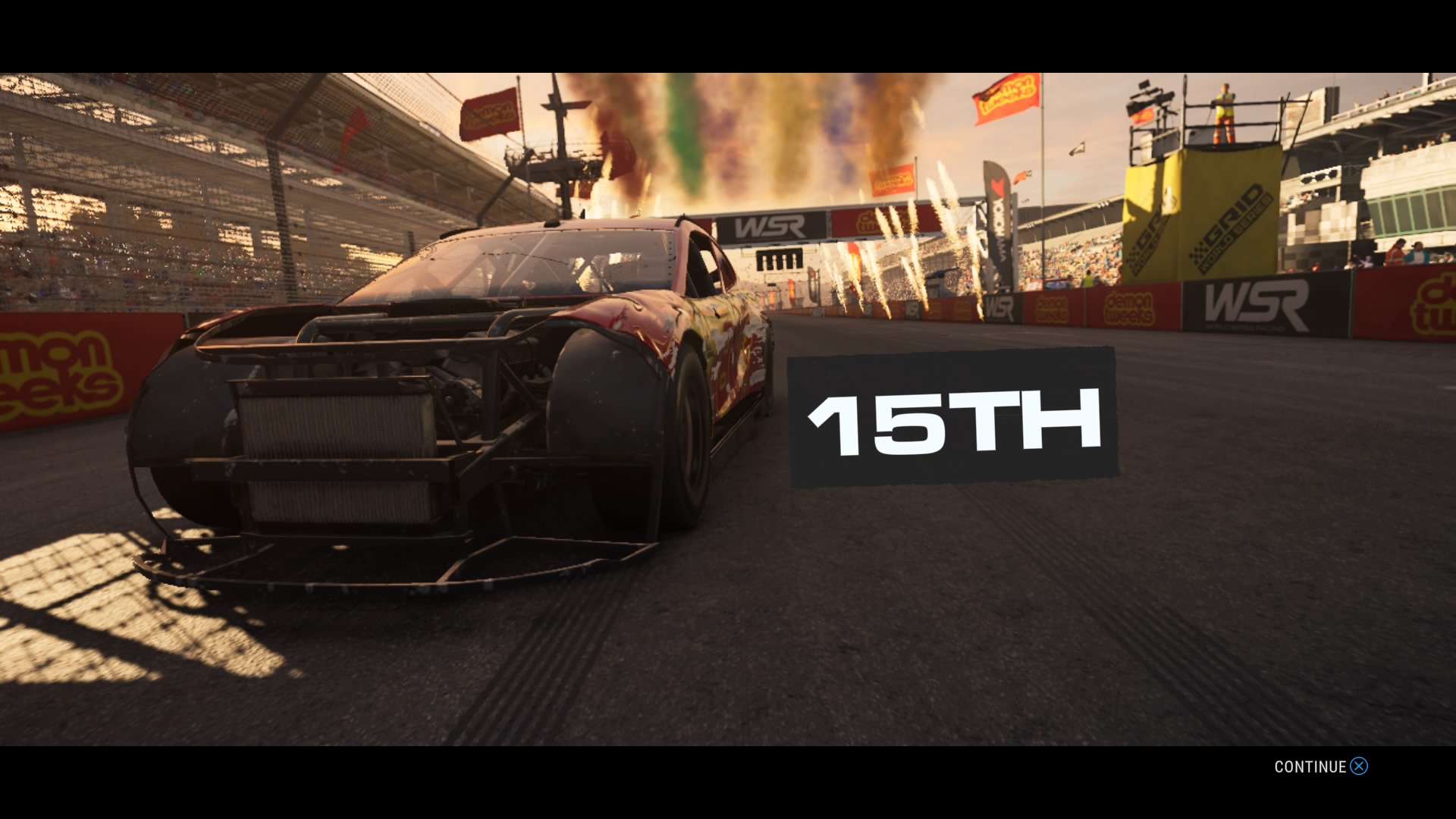
Raise the Yellow Flag
If there’s one thing that Codemasters hung their hat on last console generation, it was the fact that they made gorgeous looking racers. I went into GRID’s first incarnation on a modern console expecting much of the same. Unfortunately, this doesn’t seem to ring as true this time around. When playing on my launch PS4, the visuals were decidedly more underwhelming than I anticipated. Perhaps the game was designed with the PS4 Pro as their lead console, but for those of us slumming it in the land of 1080P, there were plenty of graphical difficulties to go around.
For one, unless you were making use of the game’s admittedly impressive instant replay cameras, everything in motion lacked any sort of crisp detail. This is not to say that it looked bad, per se, but it just didn’t look anywhere near as sharp as I would’ve expected. Even the pre-race fly-in camera that pans past each of the stationary participants looks like it had been dipped in Vaseline before use. I tried to write it off as a stylistic choice on the behalf of the developer. However, when I realized that the same fuzziness was being applied to the name cards hovering over top of each car, it suddenly became clear that this was likely a technical limitation or difficulty of some sort. If you’re still wondering what I’m describing, the screenshot below demonstrates this phenomenon, as captured on my console.
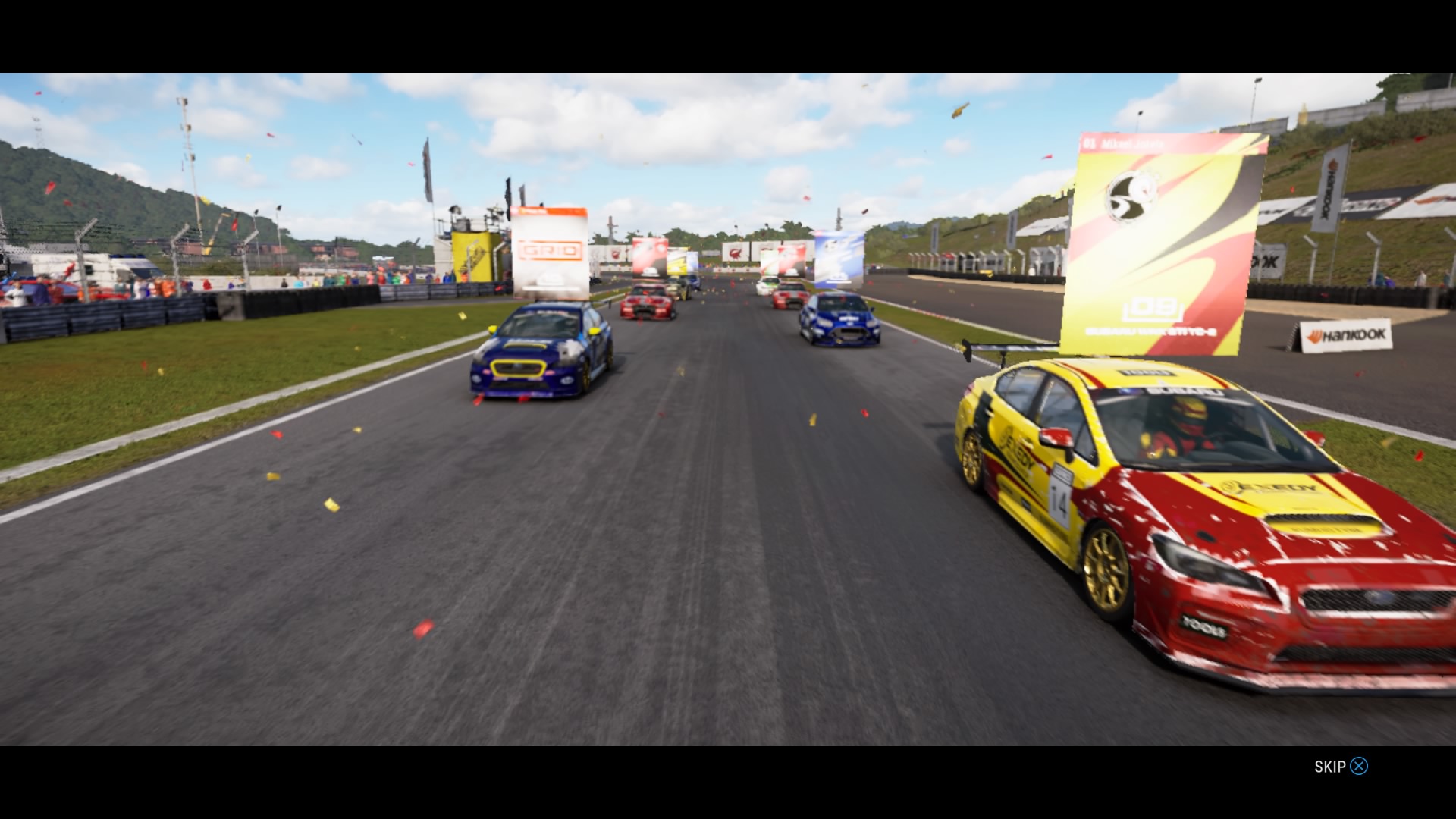
Another quirky oversight that I hope can be addressed after launch are the handful of lighting issues that I encountered. Especially when racing on tracks where bright beams of light would shine across the track (think sunsets or when emerging from a tunnel into an extremely well-lit portion of the map), regardless of both my TV and the game’s brightness and contrast settings, the race line indicator would be completely washed out to the point that it was virtually invisible. For a game that is increasing dependent upon running the proper line, this made matters far more difficult than they should be.
In an age where many vehicle manufacturers will ask developers to shy away from allowing their vehicles to be damaged during a competition, GRID goes full-bore into the land of destruction. As another pillar of Codemasters’ quest to continuously provide drama throughout the course of a match, every car (at least every car that I encountered) can be extensively damaged. What better way to drive home the stakes of a difficult circuit than to leave the starting blocks driving a sports car, only to cross the finish line looking like you’re driving a go-kart. There was one instance where I hit the wall so hard that a dialog screen informed me that my vehicle had been totaled. Aside from that, you could seemingly drive your automobile to hell and back, and as far as I could tell this had no bearing on the performance of a freshly defaced jalopy. I felt like this was a bit of an oversight, as I would’ve preferred to see them go all-in on the realism of the deterioration and have it impact the way each car actually drove.
The argument could be made that if GRID had been an early-generation PS4 title, it would’ve been a bit more praised than it will be this late in the console’s life cycle. As that may be true, the title’s genuinely compelling AI mechanics and multi-faceted livery of vehicles help it stand on its own as the proper reboot that this franchise deserves. It may not feature all of the bells and whistles that we’ve grown accustomed to in 2019, but it’s certainly a solid foundation to rebuild a brand around.
Grid review code provided by publisher. Reviewed on PS4. For more information on scoring, please read our Review Policy.
-
Regardless where you finish, every race has something noteworthy occur
-
There are finally ramifications to reckless racing
-
Racing in a Formula One car is so damn fun!
-
Nemesis characters don't seem to persist beyond a single series
-
Not as graphically impressive as you might expect
-
Vehicular destruction doesn't seem to affect its performance
